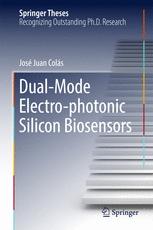

Most ebook files are in PDF format, so you can easily read them using various software such as Foxit Reader or directly on the Google Chrome browser.
Some ebook files are released by publishers in other formats such as .awz, .mobi, .epub, .fb2, etc. You may need to install specific software to read these formats on mobile/PC, such as Calibre.
Please read the tutorial at this link: https://ebookbell.com/faq
We offer FREE conversion to the popular formats you request; however, this may take some time. Therefore, right after payment, please email us, and we will try to provide the service as quickly as possible.
For some exceptional file formats or broken links (if any), please refrain from opening any disputes. Instead, email us first, and we will try to assist within a maximum of 6 hours.
EbookBell Team

4.0
76 reviewsThis highly interdisciplinary thesis reports on two innovative photonic biosensors that combine multiple simultaneous measurements to provide unique insights into the activity and structure of surface immobilized biological molecules. In addition, it presents a new silicon photonic biosensor that exploits two cascaded resonant sensors to provide two independent measurements of a biological layer immobilized on the surface. By combining these two measurements, it is possible to unambiguously quantify the density and thickness of the molecular layer; here, the approach’s ability to study molecular conformation and conformational changes in real time is demonstrated.
The electrophotonic biosensor integrates silicon photonics with electrochemistry into a single technology. This multi-modal biosensor provides a number of unique capabilities that extend the functionality of conventional silicon photonics. For example, by combining the complementary information revealed by simultaneous electrochemical and photonic measurements, it is possible to provide unique insights into on-surface electrochemical processes. Furthermore, the ability to create electrochemical reactions directly on the silicon surface provides a novel approach for engineering the chemical functionality of the photonic sensors. The electrophotonic biosensor thus represents a critical advance towards the development of very high-density photonic sensor arrays for multiplexed diagnostics.